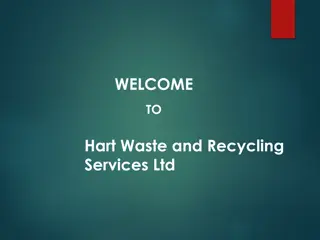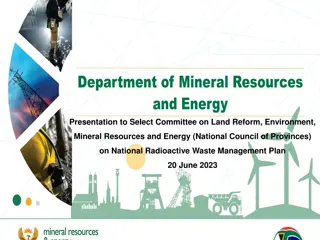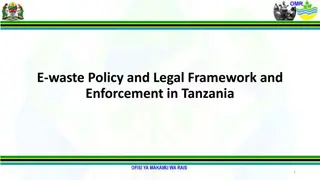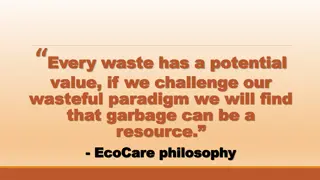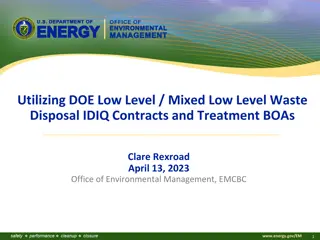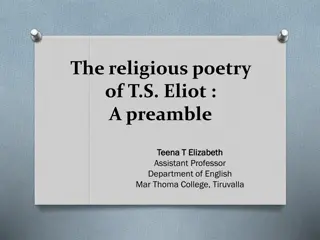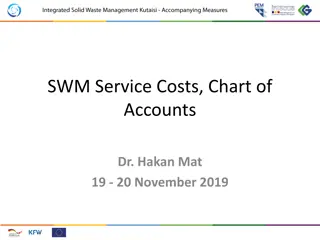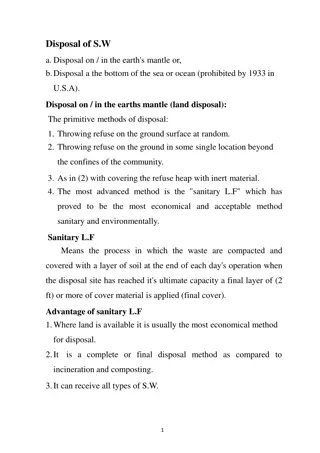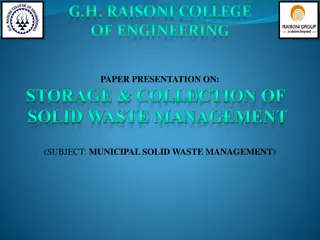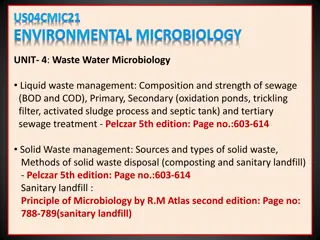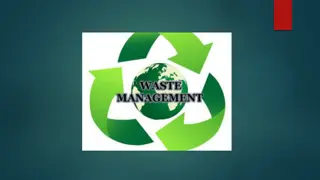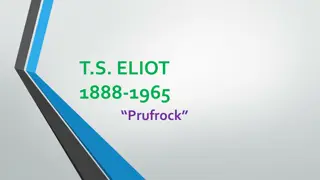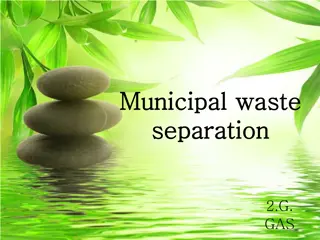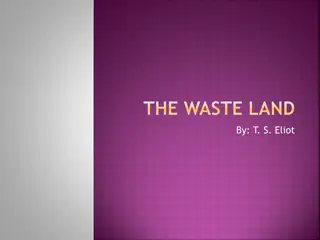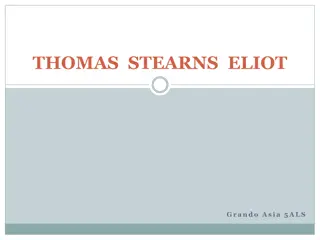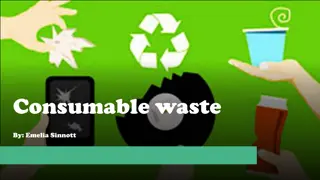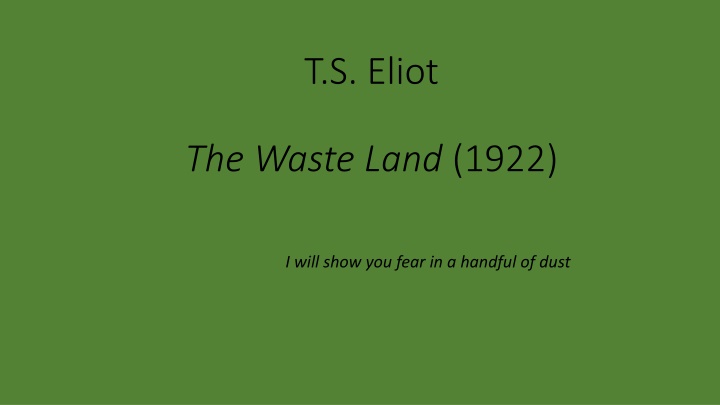
T.S. Eliot's 'The Waste Land' Through Collage Technique
Delve into T.S. Eliot's renowned work 'The Waste Land' (1922) and explore its use of collage technique, stream of consciousness, auditory imagination, and more. This analysis highlights the essence of individual voices, juxtaposition of sensory images, and the innovative portrayal of experience in a polyphonic style.
Download Presentation

Please find below an Image/Link to download the presentation.
The content on the website is provided AS IS for your information and personal use only. It may not be sold, licensed, or shared on other websites without obtaining consent from the author. If you encounter any issues during the download, it is possible that the publisher has removed the file from their server.
You are allowed to download the files provided on this website for personal or commercial use, subject to the condition that they are used lawfully. All files are the property of their respective owners.
The content on the website is provided AS IS for your information and personal use only. It may not be sold, licensed, or shared on other websites without obtaining consent from the author.
E N D
Presentation Transcript
T.S. Eliot The Waste Land (1922) I will show you fear in a handful of dust
Stream of consciousness The poem has no single uniform style, but employs a polyphonic collage of styles and voices, often as a series of fragments, some voiced, some unvoiced as thoughts passing through the mind of a character. The primary effect of this procedure is to weaken the felt presence of an omniscient, or single-voiced, narrator.
withdrawal into the interior The integrity of each individual person needs to be affirmed in ways that capture the quintessence of that person and what better way is there than by letting that individual person speak, in their own accents and tonalities, indeed in their own voice. We must not only have descriptions of what passes through their minds and feelings, but we must hear them as well.
Auditory Imagination What I call auditory imagination is the feeling for syllable and rhythm, penetrating far below the conscious levels of thought and feeling, invigorating every word; sinking to the most primitive and forgotten, returning to the origin and bringing something back, seeking the beginning and the end. It works through meanings, certainly, or not without meanings in the ordinary sense, and fuses the old and obliterated and the trite, the current, and the new and surprising, the most ancient and the most civilized mentality. T.S. Eliot, Matthew Arnold, The Use of Poetry and The Use of Criticism (Faber and Faber, 1933)
the collage technique The art of the twentieth century took on the task of representing experience in all its multiplicity and sensory variety and tried to find a literary method that captures it. The effect might be likened to the use of cinematic takes , one shot after another as a series that give us a sense of place or event without commentary as to the value or meaning to be assigned to each take . In film, this is the core of the editing technique of montage. The camera moves from one image to another and the cineaste, during the editing process, combines each shot in such a way as to suggest implicitly the story that is being told.
In The Waste Land, juxtaposition is the guiding idea and the text gives visual, auditory, and other sensory images. The auditory images let us hear the text in all its multivoicedness. The city itself is treated as a collage and this is represented in the text in visual and auditory fragments juxtaposed without comment, in the same way impressions stream through consciousness without interruption
In Eliots poetry, Jerome Meckier suggests, the meaning rests not in what the characters do but in the way they form a pattern, becoming perfect objective correlatives for the circumstances in which they appear and so following a satirical mode Eliot had revived with his quatrains. The only way of expressing emotion in the form of art is by finding an 'objective correlative'; in other words, a set of objects, a situation, a chain of events which shall be the formula of that particular emotion; such that when the external facts, which must terminate in sensory experience, are given, the emotion is immediately evoked. T.S. Eliot, Hamlet , 1919

